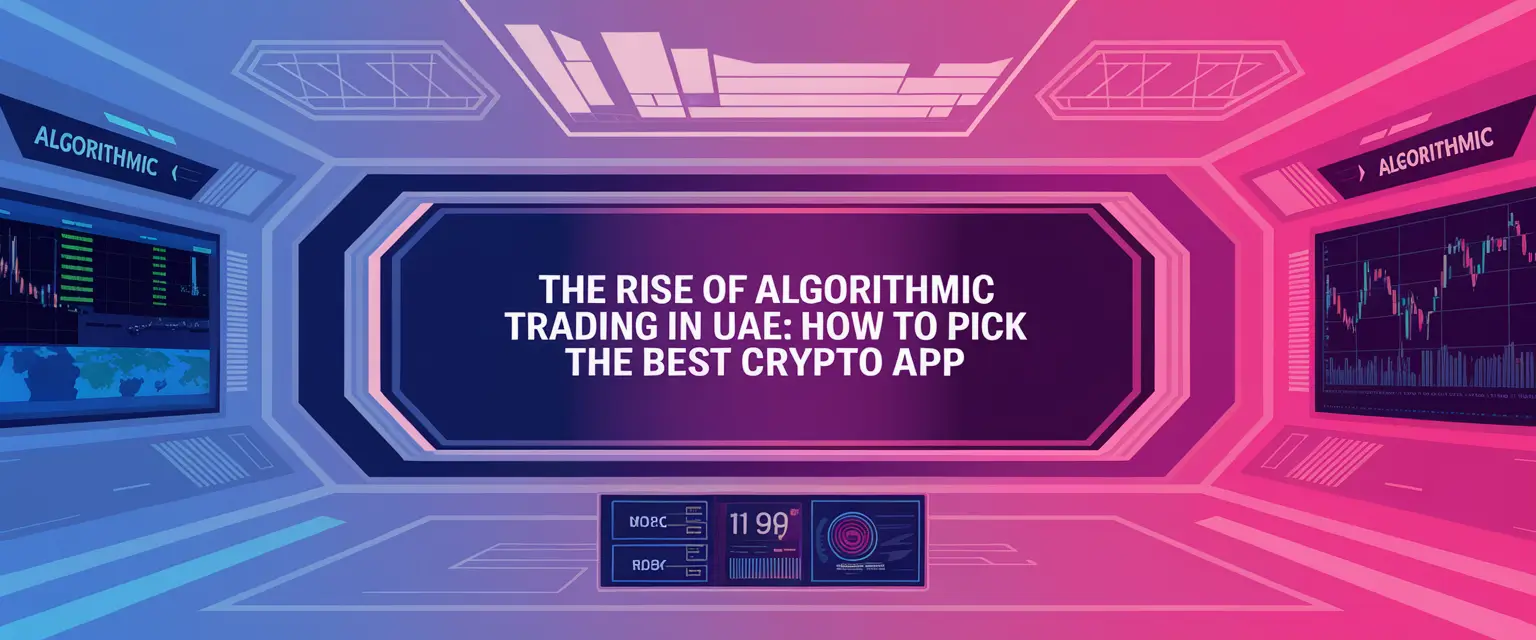Crypto bots plus effective crypto bot strategies can automate trades and make profits passively. However, it’s not as simple as it sounds. To succeed with crypto bots, you need a deeper understanding of the different strategies and their limitations.
In this guide, we explore the most effective crypto bot strategies for 2025. We also explain how to effectively implement and optimize bots, what risks to consider, and where to get started with an automated system today.
A crypto bot is an automated program that trades on your behalf. It carries out all facets of crypto trading – including market scanning, placing orders, and managing risk. In a nutshell, once you’ve configured the bot, you can benefit from a passive trading experience. But that’s not all. Unlike human traders, crypto bots work tirelessly around the clock. This ensures you don’t miss out on potential trading opportunities, regardless of the time of day. Additionally, bots also execute trades at high speeds and remove emotion from decision-making. However, as with all other trading tools, not all bots are created equal. A bot’s efficiency and profitability depend largely on its underlying algorithm. Put otherwise, crypto bot strategies can make or break your trading success. As mentioned, crypto trading bots are ultimately computer software. This software has complex strategies and technical indicators coded into its program. In most cases, bots follow a simple ‘if-then’ rule. For instance: Now, these programs will have both inputs and outputs. The input will be the real-time price acquired from a crypto exchange through an API. After processing the price data and applying the strategies, the bot generates the output. This will be in the form of buy and sell signals. Here is a step-by-step explanation of how bots work from a trader’s perspective. Additionally, many crypto bots offer backtesting and demo-testing features. These let you test the bot on historical data or simulated conditions before going live. This way, traders can review the bot’s return on investment (ROI) and make changes to enhance its effectiveness. Here are five reasons why you should consider using crypto bot trading strategies. Imagine being able to execute dozens of trades per second. This is simply not feasible for human traders. As such, speed is one of the biggest advantages of using crypto trading bots. It allows bots to capitalize on fleeting opportunities that might only last a few moments. Make no mistake about it – humans can’t replicate a bot’s execution speeds. Emotions can seriously impact trading decisions. Traders often experience fear, greed, and impatience that lead to poor decisions. Crypto bots, however, are immune to these emotional biases. For example, a bot executes a position based on a strategy without hesitation or second-guessing. Such accuracy is essential in the volatile crypto market, where every fraction of a second counts. Manually keeping track of your trading results can be a hassle. Traditionally, seasoned traders will tediously log their positions, which can be time-consuming. Crypto trading bots streamline and automate performance tracking. Bots often come with built-in analytics that provide real-time insights into strategy effectiveness. By reviewing these insights, you can spot what’s working and what needs to change. Most crypto trading bots have backtesting features. These allow you to test your crypto bot strategies using price data from previous years before deploying them for live trades. In other words, backtesting lets you see how a strategy would’ve performed in prior market cycles. You can then fine-tune and optimize the strategy before risking real capital. Crypto bots can manage multiple trading strategies and assets simultaneously, allowing for effective diversification. This means you can spread your money across various crypto pairs and trading approaches. Crucially, you don’t need to deal with the headache of manually managing each position. For instance, you can use the trend following and arbitrage strategies simultaneously. These two strategies have separate approaches that let you capitalize on different market conditions. Best of all, you don’t need to master the chosen strategies – the bot does everything on your behalf. Now let’s discuss the best crypto bot strategies for traders in 2025: Trend trading is perhaps one of the most beginner-friendly crypto bot strategies available. This strategy identifies and trades in the direction of a persisting trend. It relies on technical indicators, meaning the goal is to ride the momentum of the market. Interestingly, trend trading strategies are used by both short and long-term traders. The fundamental difference is the duration of the positions. For example, short-term traders look for trends within a day. Long-term traders might consider those trends over several months. Here is an example of a Bitcoin trend trading strategy: Trend following strategies are relatively easy to pick up and execute. Therefore, it’s one of the crypto bot strategies for novice traders. Scalping focuses on intraday crypto trades that span from a few seconds to hours. In this strategy, the aim is to make small and steady profits that accumulate over time. Bots using this strategy employ short time frames, such as one or five minutes. Here’s an example of crypto bot trading with the scalping strategy: In a volatile crypto market, such minute price differences can occur often. But it’s challenging to spot them and execute trades manually. The best crypto scalping bots work swiftly to find such price gaps and place orders – so you won’t miss any opportunities. With hundreds of crypto exchanges in the market, two or more platforms might quote different rates for the same pair. An arbitrage bot tries to benefit from this price difference. It buys crypto on one exchange and sells it on another simultaneously to profit from this imbalance. Arbitrage crypto bot strategies are programmed to look for price differences across multiple exchanges at the same time. There are no limitations in this regard, in terms of pairs or exchanges. For instance: To capitalize on the price difference before it alligns, the bot must execute trades at high speed. This ensures that both the buy and sell orders are processed almost instantaneously. Additionally, crypto arbitrage bots can also calculate trading commissions and other relevant fees. This is to ensure that the arbitrage profit exceeds these expenses. This is yet another strategy that’s simple enough for beginners. Copy trading bots let you replicate the strategies of successful traders, allowing you to benefit from their expertise. Usually, copy trading bots are offered directly on crypto exchanges. For instance, suppose you choose to copy a trader on ByBit. You can monitor your copy trading bot and make adjustments when needed. What’s more, most platforms let you copy multiple traders at the same time. This is ideal for diversification. Market making is also one of the top crypto bot strategies. In a nutshell, this strategy capitalizes on the order book spread. For instance, even when a crypto is actively traded on an exchange, the spread between its buy and sell prices can be substantial. Market-making bots place buy orders for the crypto at lower prices and sell them at higher values, thereby profiting from this spread. Needless to say, market making bots operate at high speeds. They constantly update their orders based on real-time market data. This allows them to swiftly react to changes and maintain competitive bid and ask prices. Mean reversion strategies assume that a crypto’s price will revert to its average value over time. So, when a crypto pair deviates from its mean price value, the bot acknowledges this as a potential opportunity. It then places a buy or sell order, expecting the pair’s price to move back to the average. For example: Mean reversion is one of the best crypto bot strategies for volatile coins. After all, they benefit from frequent price fluctuations. Meaning more tradable opportunities. Grid trading strategies are a better fit for those with prior crypto experience. This technique sets up a chain of buy and sell orders at regular intervals around a specific price. Here’s how a crypto trading bot would use this strategy: Grid trading bots are used in both range and trend following markets. As the price moves up, more orders are placed – leading to more profits. However, the challenging part is knowing when to stop the grid. If the market moves firmly in one direction, the bot’s predefined grid levels might not be effective anymore. Simply put, the Martingale strategy doubles the investment amount after each losing position. This is because it expects a successful outcome to eventually occur, recovering all previous losses and generating a profit. For example: Needless to say, the Martingale strategy has a high-risk high-reward outlook. Also, it requires a large capital balance and is often undertaken by experienced traders. Martingale strategies are often deployed in derivative markets, such as crypto options and futures. HFT algorithms execute a high volume of trades rapidly. These trades are typically for very short durations, aiming to capitalize on small price discrepancies that exist only for seconds or milliseconds. HFT bots are used for strategies like arbitrage and scalping, which we discussed earlier. The bot detects tiny price differences and executes orders at lightning speed. While HFT has high profit potential, it demands substantial infrastructure and low-latency connectivity. Additionally, HFT necessitates a considerable amount of capital to support the high volume of trades. Because of such demands, HFT crypto bot strategies are primarily used by institutional traders. The only alternative for those on a budget is to apply high leverage levels. However, this is a high-risk strategy that can lead to significant losses. Crypto bot strategies don’t cater exclusively to short-term traders. For instance, the DCA strategy is ideal for investors preferring a longer-term horizon. In DCA, a trader invests a fixed amount of money in crypto at regular intervals. This systematic approach is made regardless of the price. This way, the investment is distributed over time – lowering the average cost per unit during bearish trends. Here’s how a DCA bot might operate: So, by investing a fixed amount at regular intervals, the DCA bot accumulates ETH over time at varying prices. This way, the average price per unit will be less affected by short-term price movements. DCA is particularly useful in volatile markets, ensuring steady investment without the need for precise timing. Still confused about which crypto bot strategies are worth implementing? Consider the following points before getting started. The first step when exploring crypto bot strategies is understanding your goals. Are you aiming for long-term growth or short-term profits? For example, long-term traders could opt for trend trading or DCA, while short-term traders can consider strategies like scalping or arbitrage. Different strategies come with varying levels of risk. For example, HFT and arbitrage come with lower profit potential but are typically less risky. Another risk-averse option is trend trading or mean reversion. Conversely, strategies like Martingale are suitable for those happy to risk large amounts for higher returns. Either way, assessing your comfort level with risk will guide you in picking the right strategy. Global market conditions significantly impact the crypto trading space. They should also influence your decision when selecting a suitable strategy. For instance, during a volatile market, grid trading or market making can be advantageous. These crypto bot strategies capitalize on frequent price fluctuations. Conversely, in a stable market, trend-following strategies might be more effective – as they rely on trend continuity. A crypto bot can handle the complex part of strategy application. Nevertheless, it should match your level of expertise for you to understand it. Assess your level of expertise and pick a strategy that matches your skill set. As you gain experience, you can explore more complex strategies that require more nuanced handling. Once you’ve chosen a strategy, it’s essential to backtest it with historical data. The strategy might make sense on paper. However, you need to know how it would’ve performed in real market conditions. This helps you make adjustments in the strategy parameters. Otherwise, you’re taking a huge risk. Amidst the promises of profits, it’s easy to look past the potential pitfalls of crypto bots. Here are some mistakes to avoid before starting your crypto bot journey. Crypto bot trading can indeed automate and simplify the process. In fact, many new traders are drawn to bots for the potential of passive profits. However, while bots handle the heavy lifting, having a solid grasp of trading strategies is still crucial. This knowledge ensures you can adopt different systems and effectively manage any risks that arise. Put otherwise, crypto bot strategies are most effective when paired with a trader’s insight and oversight. Crypto trading bots are evolving rapidly. Using outdated bots or strategies can lead to missed chances and even poor performance. Therefore, it’s crucial to choose a bot that comes with regular updates. This lets you benefit from new features and revisions that can enrich performance. In addition, you should conduct adequate research on new trading algorithms and tools to gain a competitive edge in the market. Even with a well-programmed bot, effective risk management remains crucial. Many traders underestimate the importance of setting proper risk controls. Traders should ensure that their bot is configured with appropriate stop-loss and take-profit levels. This will protect you from extreme losses and ensure that gains are automatically locked in. Additionally, don’t put all your money into a single strategy. Consider using multiple strategies to spread the risk. Although bots are designed to operate autonomously, they still require regular monitoring. The crypto markets can take a rapid turn at any time. An effective strategy today might not be profitable in the future. If the bot’s performance deviates significantly, it might be time to tweak the settings or switch strategies. Traditional crypto bot strategies are based on fixed rules. However, AI crypto trading bots also include artificial intelligence and machine learning in their algorithm. This key distinction allows AI bots to offer more dynamic and responsive trading solutions. Let’s take a closer look at how AI trading bots differ from their traditional counterparts. AI bots continuously learn from market changes. If the market experiences unexpected volatility, an AI bot can quickly alter its trading algorithm based on real-time data. This aspect improves decision-making over time. Traditional bots, however, will stick to their initial programming. This means they can miss out on new trading opportunities or perform ineffectively during sudden market shifts. AI bots can incorporate alternative data such as news and social media sentiment into their decision-making process. For example, an AI bot might analyze Twitter sentiment to gauge investor mood and adjust trading strategies accordingly. On the other hand, traditional bots generally focus solely on technical indicators. This is a huge drawback, as they lack a broader analytical capability. Some AI trading bots often use predictive tools to foretell market trends. This means AI crypto trading bots can learn and adapt. Over time, these aspects can improve profitability and mitigate risk more effectively. In contrast, traditional bots cannot foresee potential market shifts. When deploying crypto bot strategies, it’s crucial to use low-cost trading platforms that support a wide range of markets. Here’s a quick overview of the best platforms for crypto bot usage: AvaTrade is a popular brokerage platform that supports a variety of assets, including crypto. It offers multiple crypto CFDs, including Bitcoin, Ethereum, NEO, Ripple, and XRP. One of AvaTrade’s key strengths is its user-friendly interface – which appeals to both beginners and professionals. The platform supports various trading styles and strategies and integrates advanced charting tools. You can also run automated strategies by connecting your crypto bot via APIs. AvaTrade charges no commissions. This reduces the overall trading cost, which is imperative for bots. Account funding can be done via Visa and MasterCard, and the minimum deposit required is just $100. The platform also facilitates leverage trading, with limits depending on where you live. Finally, AvaTrade is regulated on multiple continents, providing an added layer of trust and reliability. Pros: Cons:
ByBit is another notable player in the world of crypto trading. This exchange lets you buy, sell, and trade thousands of cryptocurrencies. With high liquidity, ByBit ensures fast execution and minimal slippage. The platform comes with built-in bots such as the grid, arbitrage, and Martingale strategies. These are free to use. Additionally, it also supports third-party crypto bots via APIs. One of ByBit’s standout features is its focus on crypto derivatives products, particularly perpetual contracts. These allow traders to speculate on crypto prices with high leverage. Perpetuals also support short-selling, which is crucial for most bot strategies. ByBit charges just 0.10% per slide in trading commissions. However, the more you trade, the lower the commission. ByBit supports fiat deposits via third-party processors. This includes Visa and MasterCard. Pros: Cons:
If you’re new to crypto bots, follow the steps below to get started. Begin by selecting the right crypto bot for your needs. Ensure it supports the exchanges and assets you plan to trade. Some bots feature only one strategy. If that’s the case, you can head directly to the next step. If not, consider which strategy to use and adjust the specific parameters. Whether it’s trend trading, scalping, or arbitrage, each strategy has its unique approach and requirements. Set the relevant parameters, such as technical indicators and buy/sell signals, to configure the bot to follow the selected strategy. This includes defining stop-loss and take-profit levels, maximum trade sizes, and overall risk exposure. Set up any necessary integrations with your chosen crypto exchanges. This can be done using API keys. This enables the bot to access real-time data and execute trades on your behalf. At this stage, your bot should be ready for launch. However, before going live, you should engage in extensive backtesting. This will help you understand whether the crypto bot strategy acts as it should. Backtesting also lets you assess risk factors, including maximum drawdown and volatility. Moreover, you can identify trends or patterns in your bot’s performance. For instance, you’ll know if the strategy performs better in certain market conditions or fails in others. Once you’re confident in the strategy’s performance from the backtesting phase, deploy the bot for live trading. Remember to monitor the bot’s activities and be prepared to adjust if market conditions or performance metrics change. For someone new to automated trading, the process of finding the right crypto bot strategy can be overwhelming. Instead, the best option is to choose a bot that automatically chooses the right strategy based on real-time market conditions. This is where Algobot, the best AI Crypto Trading Bot, can help. Algobot is an AI trading bot that excels in multiple asset classes, including crypto, forex, and gold. It uses machine learning to study market data and dynamically adjust its trading strategies. Algobot is designed to deploy over 100 technical indicators to make this happen. Algobot also offers customizable risk management options. You can choose from conservative, balanced, or aggressive risk models. For those who prefer a more hands-on approach, Algobot provides buy and sell signals via Telegram. All in all, Algobot lets you benefit from sophisticated crypto bot strategies without the steep learning curve. This makes Algobot ideal for beginners and experienced pros alike
Bots enable traders to generate profits passively. However, it’s crucial to know which crypto bot trading strategies are right for your goals. It’s also important to set realistic expectations. Just remember, no two bots are the same. Some bots make risk-averse gains and constantly evolve to changing market conditions. Others are a quickfire way to lose money. Therefore, independent research is imperative. The best bot strategy for crypto depends on your trading goals and risk tolerance. Common strategies include trend following, arbitrage, scalping, and market making. Crypto bot trading can be safe if you use reputable bots and follow risk management effectively. However, bear in mind that no strategy offers guaranteed profits – you could lose money. Crypto bot strategies can be effective when properly configured and backtested. Their success largely depends on the specific parameters the bot is programmed to follow. Apakah Anda sedang mencari pengalaman bermain game online yang seru sekaligus berpotensi menghasilkan keuntungan besar? Jika ya, Anda berada di tempat yang tepat dengan situs slot online! Bermain SLOT88 adalah pilihan yang sempurna untuk menikmati hiburan dan peluang mendapatkan hadiah yang luar biasa, mulai dari ratusan ribu hingga miliaran rupiah. Artikel ini akan membahas berbagai aspek penting dari SLOT88, termasuk penyedia permainan terkemuka, tips untuk menang, dan cara memilih platform yang tepat. SLOT88 semakin populer di seluruh dunia, termasuk di Indonesia. Berikut adalah alasan mengapa permainan ini menjadi favorit: Penyedia permainan berkualitas adalah kunci untuk mendapatkan pengalaman bermain indobet, eslot, gempy138, slotvip daan gemoy138 pakai link slot terpercaya yang memuaskan. Berikut adalah beberapa nama besar yang terkenal dengan kualitasnya: Bagi Anda yang ingin meningkatkan peluang menang, berikut adalah beberapa tips yang bisa diterapkan: Pelajari istilah-istilah penting seperti paylines, RTP, dan volatilitas. 90% pemain yang sukses menguasai dasar-dasar permainan sebelum mulai bermain bersama daftar slot sudah pasti untung mencapai ratusna juta rupiah. Banyak platform menawarkan bonus menarik seperti free spin atau bonus deposit. Pastikan untuk membaca syarat dan ketentuan agar tidak melewatkan peluang ini. Bermain dengan akun demo membantu Anda memahami mekanisme permainan tanpa risiko kehilangan uang. Pilih permainan dengan RTP di atas 95% untuk peluang menang yang lebih baik. Tetapkan batas anggaran sebelum bermain agar tetap menikmati permainan tanpa stres. Memilih platform yang terpercaya dan berkualitas sangat penting untuk pengalaman bermain slot resmi yang aman dan menyenangkan. Berikut adalah beberapa hal yang perlu Anda perhatikan: Pastikan platform memiliki berbagai permainan dari penyedia terkenal. Pilih situs dengan sertifikasi resmi dan tingkat RTP yang tinggi. Situs dengan reputasi baik memiliki sistem permainan yang adil. Desain yang mudah digunakan membuat permainan lebih menyenangkan. Dukungan pelanggan yang siap membantu kapan saja sangat penting untuk kenyamanan bermain. Pilih platform dengan metode pembayaran yang beragam, termasuk e-wallet dan transfer bank. RTP menunjukkan persentase uang yang dikembalikan kepada pemain dalam jangka panjang. Misalnya, permainan dengan RTP 96% mengembalikan Rp96 untuk setiap Rp100 yang dipertaruhkan. Pilih permainan dengan RTP tinggi untuk peluang menang yang lebih baik. SLOT88 menawarkan kombinasi sempurna antara hiburan dan peluang menang besar. Dengan ribuan pilihan permainan dari penyedia terbaik, tingkat RTP yang tinggi, dan fitur bonus yang menarik, Anda pasti akan menemukan permainan yang sesuai dengan selera Anda. Selalu ingat untuk bermain secara bertanggung jawab dan nikmati setiap momen dalam permainan. Semoga panduan ini membantu Anda dalam perjalanan menuju kemenangan besar. Selamat bermain dan semoga beruntung! Platform one-stop betting menawarkan kenyamanan dan variasi yang tak tertandingi. Inilah beberapa alasan mengapa platform ini semakin populer: Sebelum mulai bermain slot, pastikan platform yang Anda pilih memiliki kriteria berikut: Platform terpercaya tidak memiliki catatan buruk seperti keterlambatan pembayaran atau penipuan. Berdasarkan survei terbaru, 85% pemain lebih memilih situs dengan reputasi yang bersih. Platform yang sering muncul di hasil pencarian biasanya menarik lebih banyak pemain, menunjukkan keandalannya. Sekitar 70% situs yang berada di peringkat atas secara konsisten memberikan layanan berkualitas tinggi. Pilih situs yang menawarkan promosi dan bonus yang menguntungkan. Selain itu, layanan pelanggan yang ramah dan responsif menjamin pengalaman bermain yang lancar. Mesin slot telah mengalami evolusi luar biasa sejak pertama kali diciptakan. Berikut adalah perjalanan singkatnya: Mesin slot pertama dikenal sebagai “bandit bertangan satu,” dengan gulungan mekanik yang dioperasikan menggunakan tuas. Mesin ini menjadi sangat populer di awal tahun 1900-an. Slot bertema buah, atau yang dikenal dengan nama “dingdong,” menjadi sensasi di banyak negara, termasuk Indonesia, dan mendominasi dunia perjudian selama beberapa dekade. Berkat kemajuan teknologi, permainan slot kini hadir secara online. Saat ini, lebih dari 65% pendapatan kasino online berasal dari slot karena gameplay yang menarik dan mudah diakses. Dua konsep penting dalam permainan slot adalah RTP (Return to Player) dan volatilitas. Memahami juga taruhan agen bola hal ini dapat meningkatkan strategi bermain Anda secara signifikan: RTP adalah persentase uang taruhan yang dikembalikan kepada pemain dalam jangka panjang. Misalnya, permainan dengan RTP 96% akan mengembalikan Rp96 untuk setiap Rp100 yang dipertaruhkan. Pilihlah permainan dengan RTP di atas 95% untuk meningkatkan peluang menang Anda.Crypto Bot Strategies – Key Takeaways
What is a Crypto Bot?
How Does Crypto Trading Bots Work?

Benefits of Using Crypto Bots
Speed
Eliminating Emotional Bias
Track Performance
Perform Backtests
Diversify Strategies
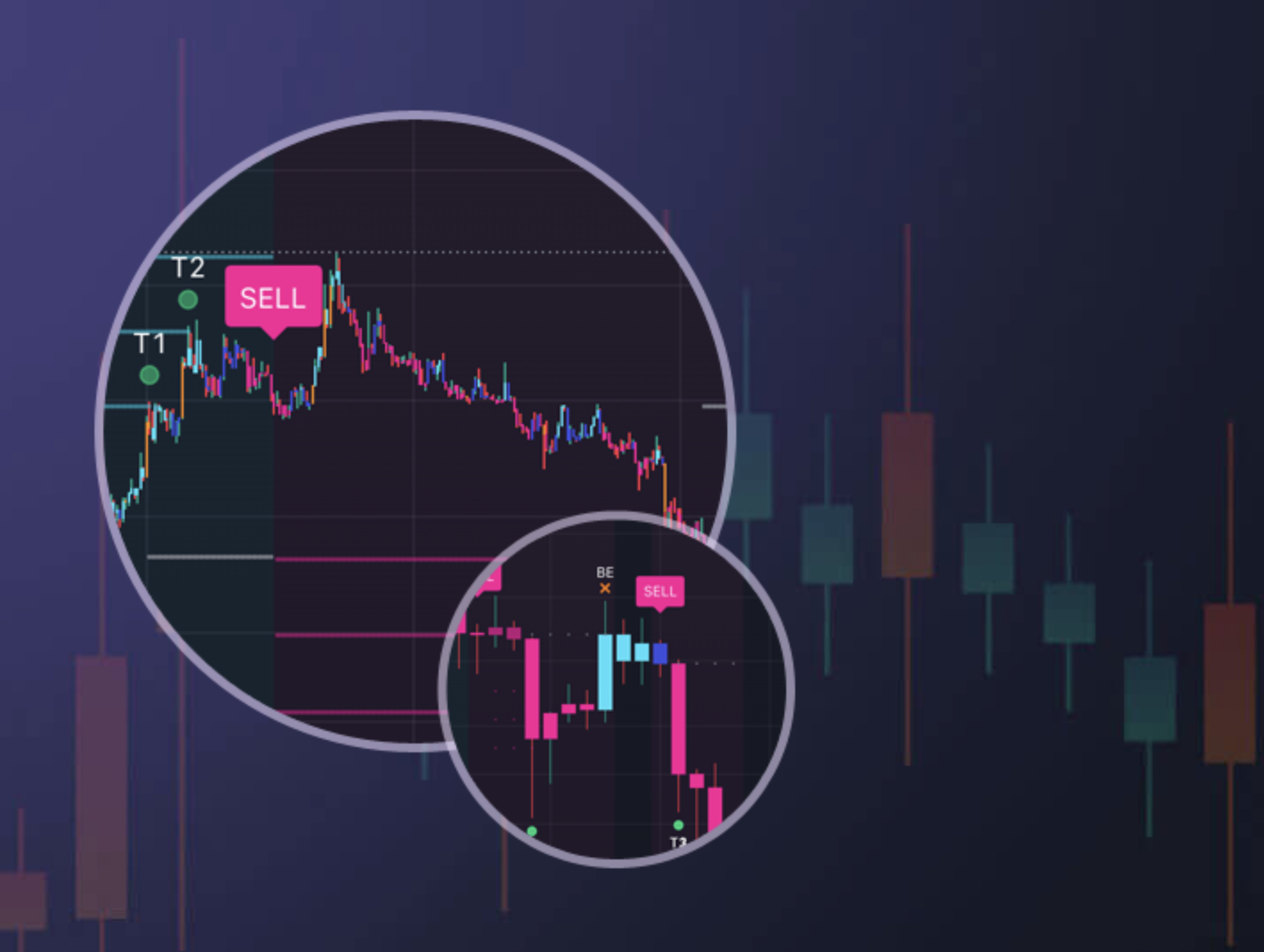
Key Strategies for Effective Crypto Bot Trading
Trend Trading
Scalping
Arbitrage
Copy Trading

Market Making
Mean Reversion
Grid Trading
Martingale Strategies
High-Frequency Trading (HFT)
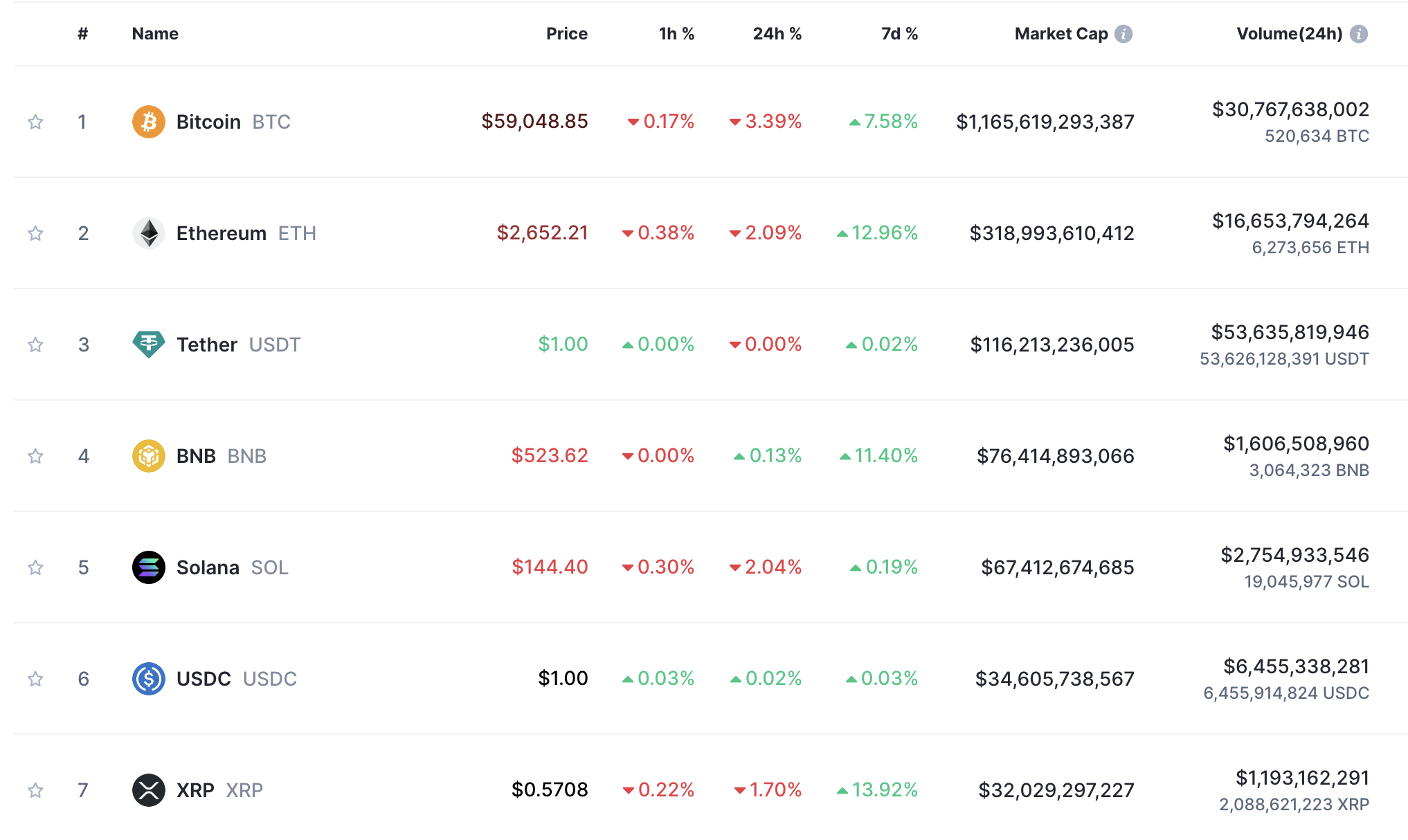
Dollar Cost Averaging (DCA)
Choosing the Best Bot Strategy for Crypto Trading
Define Your Trading Goals
Assess Your Risk Level
Analyze the Crypto Market
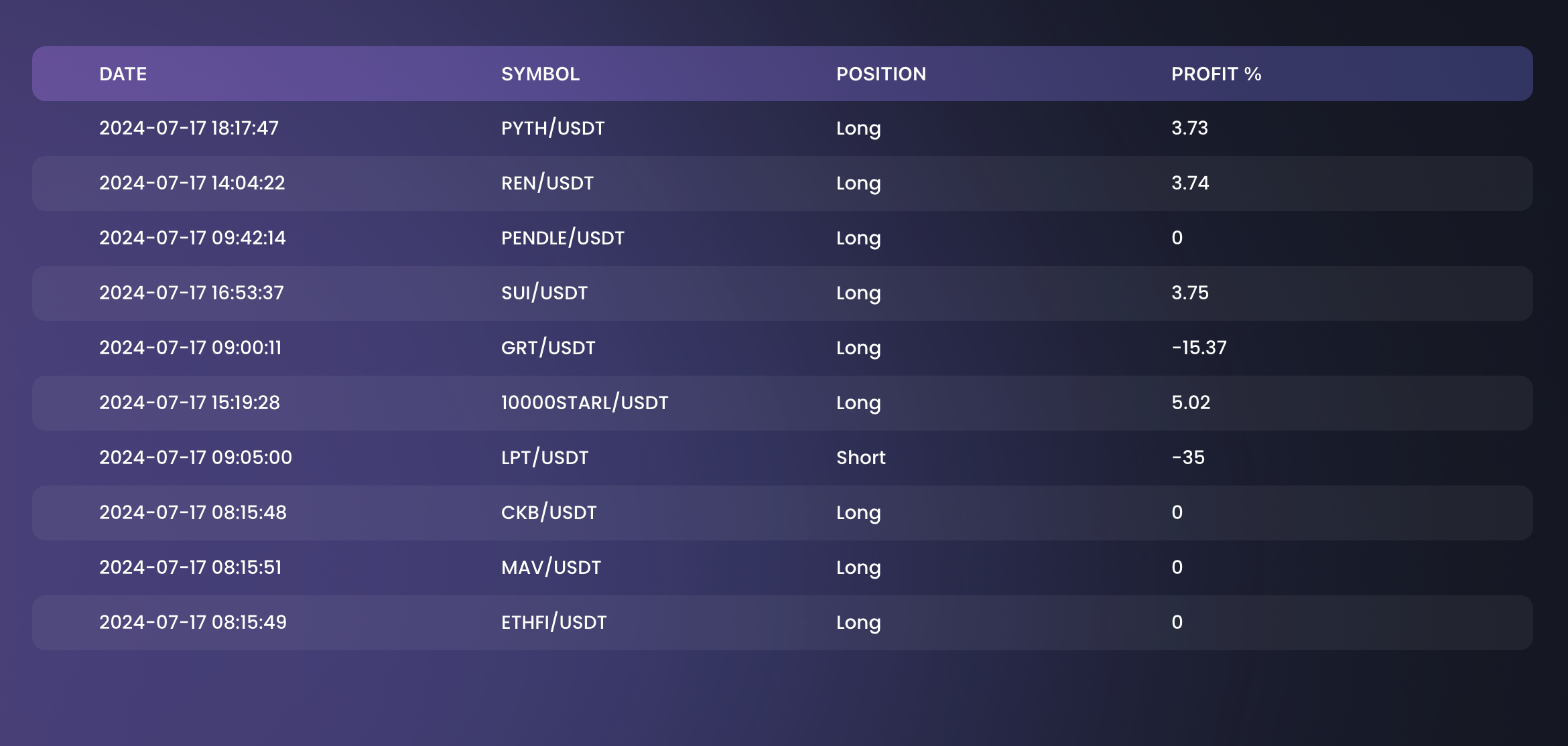
Consider Strategy Complexity
Backtest the Strategy
Common Mistakes to Avoid in Crypto Bot Trading
Not Learning About Crypto
Not Updating the Technology
Neglecting Risk Management
Ignoring Regular Monitoring
How do AI Crypto Trading Bots Differ From Traditional Bots?
Real-Time Learning
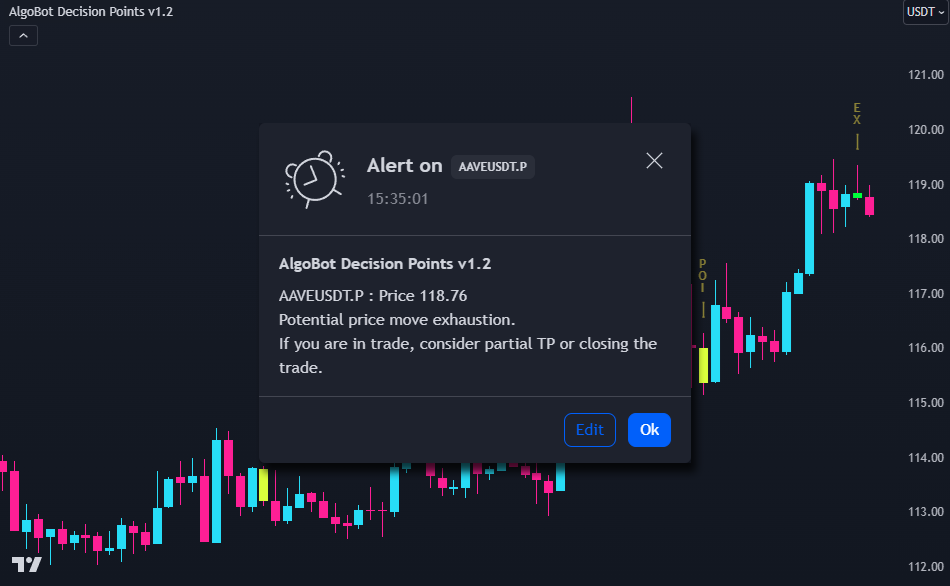
Sentiment Analysis
Predictive Capabilities
Best Trading Platforms for Crypto Bot Trading
1. AvaTrade – Trade Crypto CFDs With 0% Commission

2. ByBit – Trade Thousands of Crypto Pairs via Spot and Derivatives Markets

How to Set Up and Configure Crypto Bot Strategies
Step 1: Choose a Crypto Trading Bot
Step 2: Choose a Strategy
Step 3: Connect the Bot to Exchange
Step 4: Backtest the Crypto Bot Strategy
Step 5: Launch the Bot
Best AI Crypto Bot
Conclusion
FAQs
What is the best bot strategy for crypto?
How safe is crypto bot trading?
How effective are crypto bot strategies?
Panduan Lengkap Bermain SLOT88: Keseruan dan Kesempatan Menang Besar SLOT88 Kasih Untung Besar
Mengapa Memilih SLOT88?
1. Akses Mudah
2. Beragam Pilihan Permainan
3. Peluang Keuntungan Besar
4. Modal Kecil, Hasil Besar
Penyedia Permainan Slot Terbaik
1. Pragmatic Play
2. PG Soft
3. Joker Gaming
4. Microgaming
5. Habanero
Tips Sukses Bermain SLOT88
1. Pahami Dasar-Dasar Permainan
2. Manfaatkan Bonus
3. Coba Akun Demo
4. Pilih Permainan dengan RTP Tinggi
5. Kelola Anggaran dengan Baik
Cara Memilih Platform Slot yang Tepat
1. Beragam Pilihan Permainan
2. Keamanan dan Fair Play
3. Antarmuka Ramah Pengguna
4. Layanan Pelanggan 24/7
5. Opsi Pembayaran yang Fleksibel
RTP dan Volatilitas: Apa Artinya?
RTP (Return to Player)
Volatilitas
Siap untuk Bermain?
Apa yang Membuat Platform “One-Stop Betting” Unggul?
Ciri-Ciri Platform SLOT88 yang Terpercaya
1. Reputasi yang Baik
2. Keberadaan yang Kuat di Pasar
3. Bonus dan Dukungan Pelanggan yang Menggiurkan
Sejarah Perkembangan Mesin Slot
1. Masa Awal
2. Era Mesin Buah
3. Revolusi Online
Mengenal RTP dan Volatilitas
RTP (Return to Player)
Volatilitas


